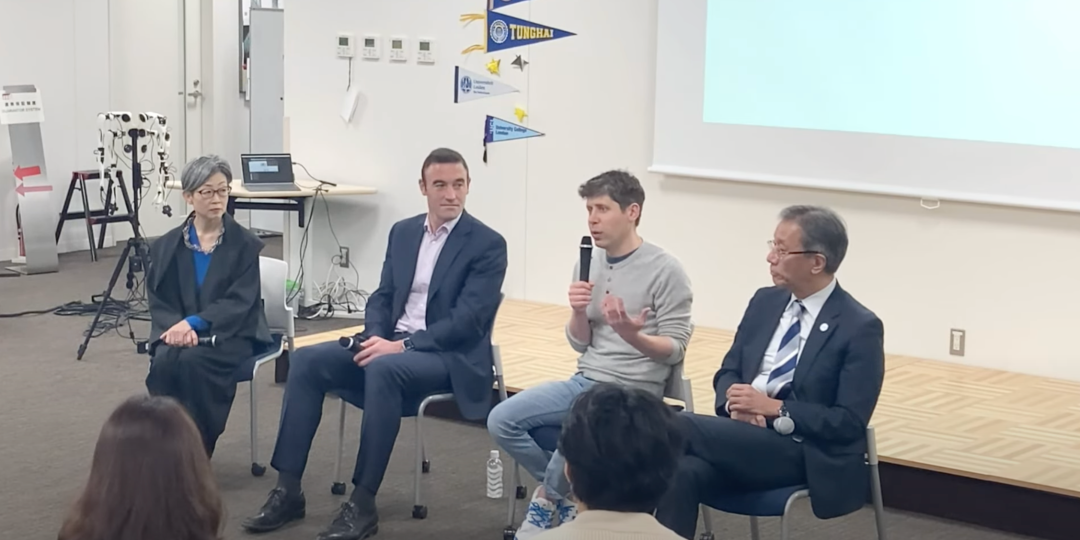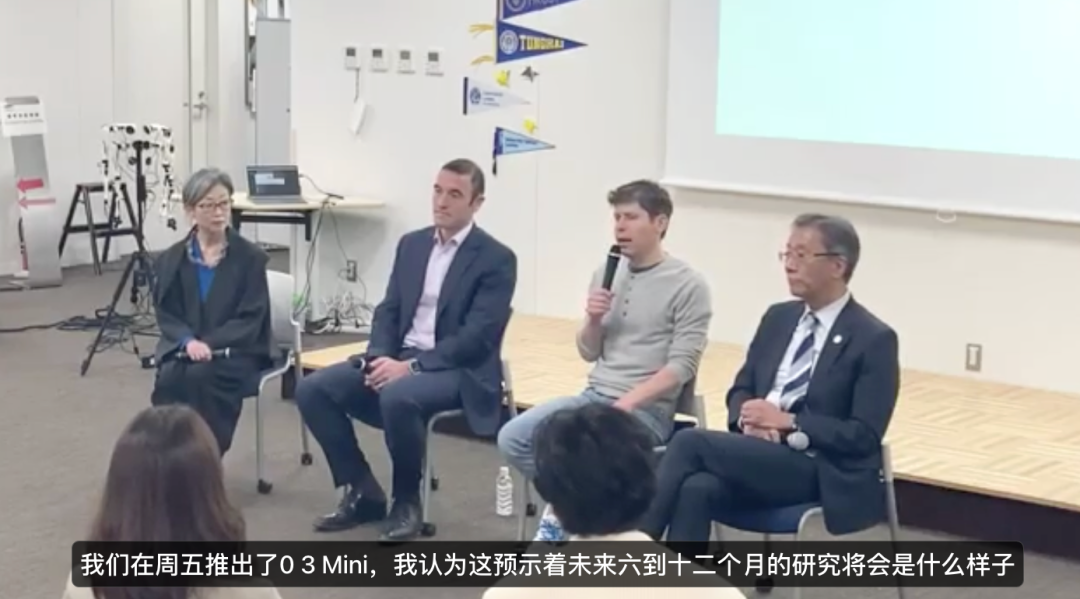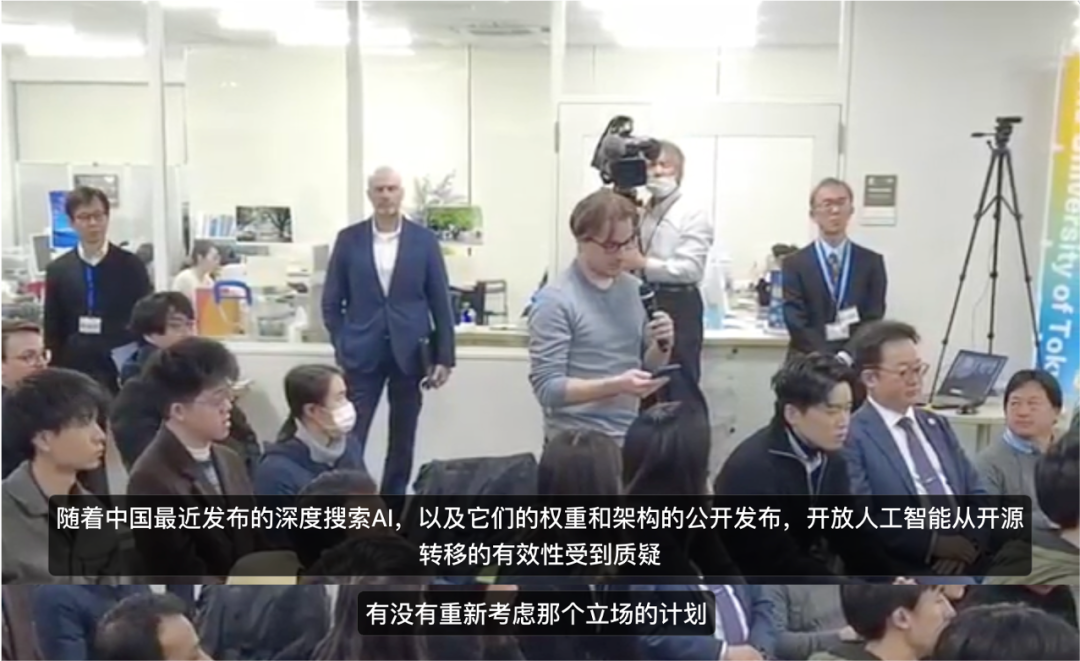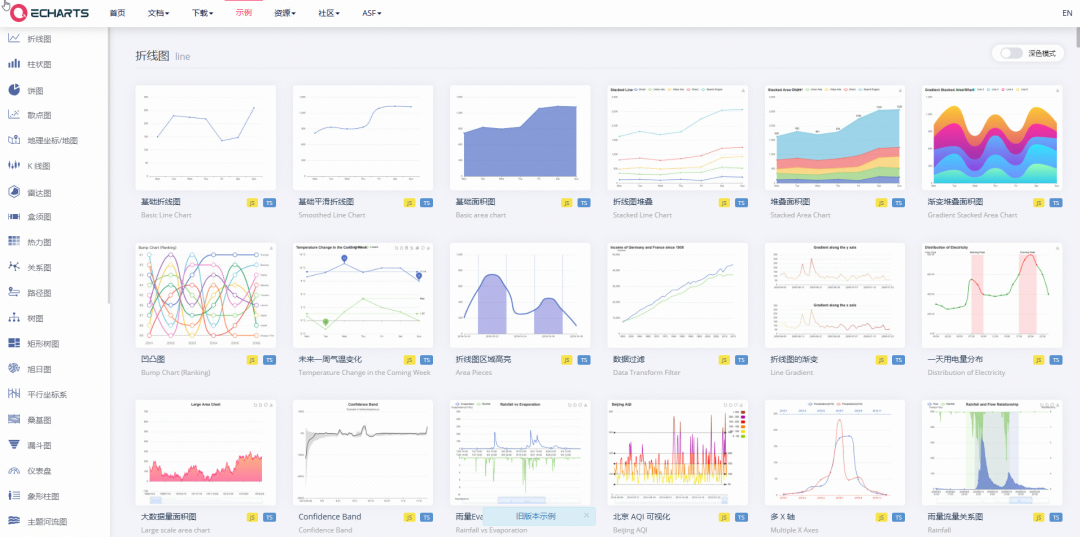DeepSeek low-cost models stir the pot, OpenAI's strategic focus shifts to higher-order intelligence, and GPT-4.5 is ready to go!
When China's AI Rookies DeepSeek As OpenAI CEO Sam Altman makes waves in the global AI space with its open source, low-cost models, he's on a low-key trip to Tokyo. At the center of the visit is undoubtedly how the industry leader is responding to the emerging competitive landscape and consolidating its technological leadership.

Altman and OpenAI Chief Product Officer Kevin Weil appeared at the University of Tokyo for an in-depth Q&A session with students and faculty before discussing a potential $500 billion investment with SoftBank founder Masayoshi Son. During the Q&A, they revealed a number of fascinating insights that foreshadow OpenAI's future direction and strategic thinking about the competitive landscape of the industry.
Iterative Roadmap for the GPT Family of Models: A Revolution in Efficiency and a Leap in Capability
Altman made it clear in the interview that progress has been made within OpenAI on GPT-4.5, and that there is a clearer idea of the path to GPT-5.5. Notably, he emphasized that "reaching GPT-5.5 doesn't require 100x more compute power."
This assertion is not an idle one, but is based on OpenAI's breakthroughs in inference modeling and reinforcement learning techniques. Altman explains: "Advances in inference modeling and reinforcement learning technology have dramatically improved computational efficiency, allowing smaller models to achieve GPT-6 level performance without requiring 100x more computing power." This means that OpenAI is exploring an "efficiency-driven" model scaling path, rather than relying solely on arithmetic stacking.
Multimodal fusion and intelligent body strategy: building a generalized AI ecosystem
Altman further laid out OpenAI's future technology blueprint, with multimodal fusion and intelligences at the center of its strategy. He previewed the power of the next generation of models, the "o-series":
- Multimodal Integration: "We'll integrate all the modalities together, and you'll be able to see on the canvas that it speaks to you while it writes and compiles code for you. It will be able to browse the Internet." This means that future OpenAI models will no longer be limited to text, but will be able to seamlessly handle multiple forms of information such as speech, images, code, and more for a more natural and comprehensive interaction experience.
- Visual Recognition Capability: "o Models will be able to support visual recognition functions, for example, if a certain hardware needs to be overhauled and a photo is taken, o series of models will be able to provide technical support." This will greatly expand the application scenarios of AI, enabling it to understand the physical world and provide more practical solutions.
- Miniaturized, high-performance inference models: "o3-mini foreshadows research directions for the next six to twelve months ......" OpenAI will continue to invest in the development of miniaturized, high-reasoning-performance models that will excel in the STEM field and beyond.
- Intelligent body prototype: "I hope that by the end of this year, we can develop a model of an intelligent body that is capable of solving high level tasks other than scientific discovery, and it may take hours to think about it, and it may even need to call a bunch of tools, but it will eventually be able to complete the task for you." This suggests that OpenAI is actively exploring the construction of autonomous intelligences with the aim of creating AI systems that can perform complex tasks on their own, and the recently released Deep Research feature is a major milestone in this strategy.
Although Altman and Weil emphasized that the purpose of the trip was to collect user feedback, their inadvertent disclosure of their GPT product plans and their response to DeepSeek's open-source strategy clearly indicate that OpenAI's strategic focus is shifting: away from purely pursuing model scale and arithmetic power, and towards deepening its focus on high-powered inference models, multimodal fusion, and intelligent body technologies to build a more generalized, efficient, and intelligent AI ecosystem. The OpenAI strategy is shifting from purely pursuing model scale and arithmetic to deepening its focus on high-capacity inference models, multimodal fusion, and intelligent body technologies, in order to build a more generalized, efficient, and intelligent AI ecology.
Analysis of the core points of the interview: Interpretation of GPT's future outlook and strategic layout
The highlights of this interview at the University of Tokyo have been compiled, and the following is an in-depth reading of the core content of the conversation:
Future Release Plans for the GPT Family of Models
Q: If ChatGPT What new emergent properties will emerge as a result of gaining 100 times the arithmetic power? Will there be any qualitative leaps?
Altman: OpenAI is actively exploring the modeling capabilities that come with increased arithmetic power, with a project called Star Gate, which will be 100 times the size of the current cluster. Looking back at the evolution of the GPT family, from GPT-1 to GPT-4, each generation of models has seen a roughly 100-fold increase in arithmetic power, and with it, impressive new capabilities.
Altman emphasized, however, that the biggest breakthrough of the past year has been the emergence of inference models, which have led to significant gains in computational efficiency. He noted that with techniques such as reinforcement learning, even small models can achieve performance in specific benchmarks that would previously have required a GPT-6 level. This means that OpenAI is exploring a new paradigm where model power is driven by algorithmic innovation and efficiency optimization, rather than relying solely on arithmetic expansion.
Based on the breakthroughs in inference modeling technology, Altman is looking forward to the future development of AI, especially in the field of autonomous scientific discovery. He believes that AI is expected to autonomously discover new scientific knowledge in the near future, especially in fields such as physics and biology. He cited the rapid iteration of OpenAI's inference model as an example. From the initial level of only reaching a million programmers in competitions, to the o3 model already ranking among the world's top 175, and then approaching the world's top 50 in the internal test model, the amazing speed of progress signals that AI holds great potential in inference ability. Altman even boldly predicts that by the end of this year, OpenAI's model is expected to be the world's No. 1 in the field of competition programming.
Future research areas and technical challenges
Q: Can you share your future research plans for each of your research areas and what you currently see as achievable and what is particularly challenging?
Altman: Released on Friday o3-mini The models that OpenAI will be working on in the next 6-12 months will be the key to the direction of OpenAI's research. Miniaturization, high inference, and ultra-fast models will be the focus of OpenAI's near-term research and development, with gradual expansion into all areas.

Multi-modal integration is another major strategic direction. OpenAI is committed to integrating text, speech, image, code and other modalities into the same model to create a more comprehensive and natural interaction experience. Continuous expansion of the model scale is also in the plan, and GPT-5, GPT-6 and even higher level models are still worth looking forward to.
Agent technology is a key area of focus for OpenAI. The recently launched Deep Research feature is an important step in the direction of OpenAI's intelligent agents. This function can autonomously complete complex online research tasks, significantly improving the efficiency of information acquisition and analysis. Altman revealed that OpenAI will continue to develop more intelligences and ultimately realize the vision of "programmed intelligences," i.e., AI systems that can autonomously perform complex programming tasks.
Looking ahead, Altman hopes to develop a general-purpose model of an intelligence capable of solving "most complex problems other than scientific discovery" by the end of this year. Such a model might require hours of thought and invoke a variety of tools, but would ultimately be able to perform complex user-delivered tasks on its own. Although the computational and algorithmic challenges of achieving this goal are enormous, Altman is confident.
ChatGPT Impact on Higher Education
Q: How will generative AI change education in the next 10, 30, 100 years?
Ottoman: Generative AI will reshape the education landscape, giving everyone access to personalized education beyond today's best. Education startups based on OpenAI technology are emerging to provide learners with customized learning solutions that bridge knowledge gaps and promote lifelong learning. The student population has become the main user of ChatGPT, and the education sector is undoubtedly one of the most promising application scenarios for generative AI.
Looking to the longer term, Altman believes that AI will dramatically accelerate scientific progress and discovery, and that the pace of scientific development could increase by 10 or even 100 times over the next 10 years. This will significantly improve the quality of human life and drive progress in cutting-edge fields such as space exploration. However, at the social level, the core needs and lifestyles of human beings will not change fundamentally, and interpersonal interactions, family life, and hobbies will remain an important part of human society. Altman made it clear that he is "not at all worried that humans will lose their jobs", and he believes that AI will bring only a change in the content of the work and the environment, rather than a subversion of the mode of operation of human society.
Equitable access to AI tools
Q: How can the world get equitable access to these AI tools?
Altman: OpenAI's goal is to make intelligence extremely inexpensive, eventually achieving near-zero-cost ubiquity and free access for everyone around the world. To realize this vision, OpenAI is continually reducing the cost of using its models. The current model's intelligence level has far exceeded that of GPT-3 two years ago, but the price is only 1% of the original GPT-3. OpenAI will continue to work to lower the threshold of AI use and promote the universality of the technology.
Talent Needs and Skills in the Age of AI
Q: What kind of talents and skills do you think Asia will value more in the AI era? Some advice for students, what talents and skills do you think are the most valuable and important?
Altman: In the age of AI, competing with AI for math or programming skills is futile. Just as the invention of the calculator revolutionized the importance of numeracy skills, the rise of AI will redefine the core competencies of talent. The key skill of the future lies in "doing things with AI that no one has been able to do before."
Altman suggests that core skills for the future include: insight into user needs, having a vision for innovation, adapting quickly to change, remaining resilient, and mastering ways to utilize AI tools to increase efficiency. kevin Weil adds that it is critical to actively embrace AI tools and integrate them into work and learning processes. He advises students to think proactively about "Can AI help me get things done faster? What tasks can be outsourced to AI?"
Altman emphasized that AI and humans are not a zero-sum game, but a "co-evolutionary" relationship. Humans should actively adapt to new technologies and gain unprecedented capabilities with AI. Weil recommends Wharton professor Ethan Malik's book Co Intelligence, which delves into how AI can be utilized for teaching and how students can work with AI.
The Impact of DeepSeek's Open Source Strategy and OpenAI's Response
Q: Earlier, you mentioned making intelligence accessible to everyone. With the recent release of China's DeepSeek AI and the disclosure of the weights and architecture, the validity of OpenAI's move away from open source has been questioned. Do you have plans to reconsider this position? What are the reasons?

Ottman: OpenAI is reevaluating its open source strategy. "Yes, we will," he says, but there's no clear timeline for which models will be open-sourced and when. According to Altman, the industry trend seems to be moving toward more open models, and the community is becoming more accepting of the potential risks and challenges of open source. He emphasized that OpenAI has made progress in ensuring the safety and robustness of open source models and believes that most open source models will be used for positive purposes. DeepSeek's move to open source has undoubtedly influenced OpenAI's strategic decisions and prompted it to reexamine its position on open source.
Other Q&A Featured
- Brain-computer interfaces and ideology: Altman believes that brain-computer interface technology is on the cusp of a great deal of growth, with the promise of a direct connection between the human brain and AI in the future. He has reservations about some of the "disruptive" brain-computer interface solutions, but is optimistic about "lightweight" solutions and sees more interesting startups emerging in the next six months.
- AI and Space Engineering: According to Weil, AI applications in space are experiencing a period of rapid growth. The increasing performance of satellites and the shrinking size of models are making it possible to deploy AI models in space. His company Planet has already launched satellites with GPUs to run AI models in space and accelerate data processing and transmission.
- AI Future Predictions: Altman predicts that by 2035, the intellectual capacity of a single data center will exceed the combined intellectual capacity of all humans and AI on the planet in 2025. This means that AI will be growing faster than ever before.
- Model Training Strategies for Scarce Datasets: Weil points out that as models become more intelligent, the sample size needed to fine-tune them is decreasing. The ability of highly intelligent models to quickly learn new domain knowledge from a small number of data points provides a new way to address the problem of model training on sparse datasets.
Entrepreneurship, robotics and technology catch-up
- According to Altman, the most important attributes of early stage team members are energy and determination. He quotes Paul Graham's famous phrase "be relentlessly resourceful" to emphasize that early-stage teams should have strong learning and problem-solving skills. Weil added that entrepreneurs need to be flexible, not give up, and be willing to learn in order to meet the challenges of entrepreneurship.
- Robotic Language and Culture: Altman believes that integrating visual and auditory inputs into an abstract thinking framework is key to the development of an autonomous language and culture for robots. He predicts that as intelligence advances, multi-intelligent systems will emerge and develop new ways of communicating and sharing information. Although it may not be as dramatic as the science fiction movies portray, the emergence of autonomous robotic communication and culture is a phenomenon to look forward to.
- Technology Catch-up and Competitive Advantage: Altman emphasized that the basic laws of business still apply in the age of AI, and that entrepreneurs need to build products or services that have lasting value, stickiness, and differentiation. He recommended Peter Thiel's book, From 0 to 1, for an in-depth look at how to build long-term competitive advantage. Weil suggested that entrepreneurs should aim to build "cutting-edge" products that push the boundaries of modeling capabilities. If a startup is afraid of OpenAI's model upgrades, there may be a problem with the direction. On the other hand, if they expect model upgrades to bring more value to their products, they are on the right track.
summarize
OpenAI CEO Sam Altman's trip to Tokyo not only signals the new direction of GPT series model iteration, but also shows OpenAI's strategic thinking in the changing global AI landscape. From emphasizing the stacking of arithmetic power to improving efficiency, from text models to multimodal fusion, and from single-model intelligence to an ecosystem of intelligences, OpenAI is actively embracing technological change and trying to maintain its leading position in the new competitive landscape. The rise of Chinese AI newcomers, such as DeepSeek, undoubtedly brings new challenges to OpenAI, and prompts it to more actively embrace openness and cooperation to jointly promote the progress and popularization of AI technology.
© Copyright notes
Article copyright AI Sharing Circle All, please do not reproduce without permission.
Related posts

No comments...




